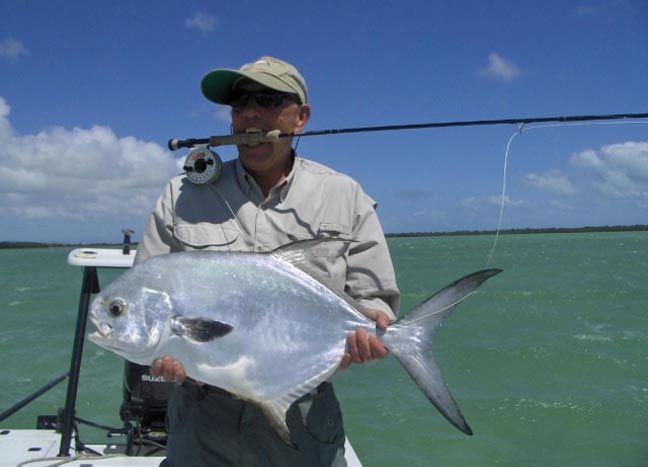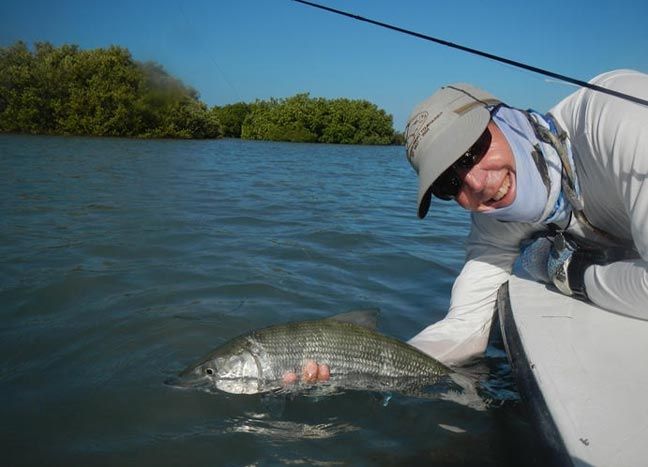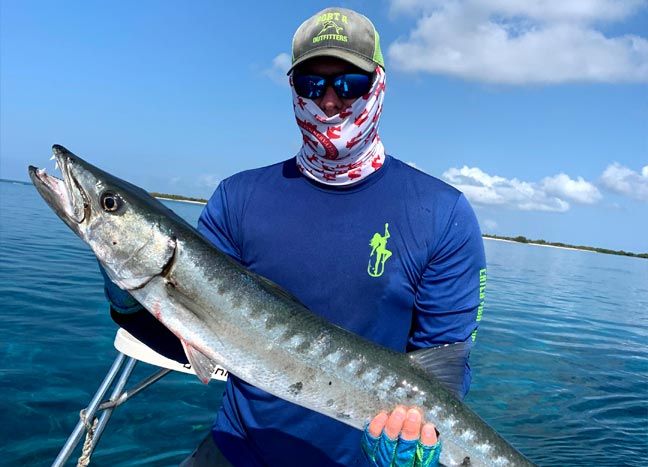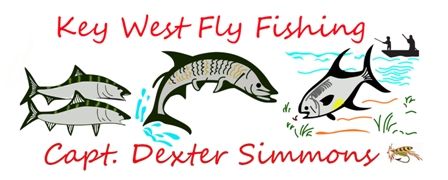THE Key West Fly Fishing
About The Fish
Guided Saltwater Flats Fishing with Fly Rods and Light Tackle
SUMMER TARPON – BONEFISH – PERMIT TRIPS AVAILABLE – CALL THE CAPTAIN TO BOOK YOUR DATES…305-304-5880
The Big Three Flats Species:

Tarpon
The Tarpon (Megalops Atlanticus) is a ray-finned fish which inhabits tropical and sub tropical waters in the Atlantic and Gulf coastal waters, estuaries, lagoons, and coastal rivers. It is also known as the silver king. Tarpon are considered one of the great saltwater sport game fishes, not only because of their size and their accessible haunts, but also because of their fighting spirit when hooked; they are very strong, making spectacular leaps into the air. They are a very boney fish and not good for eating but fun to catch. Tarpon fishing is catch and release only.

Permit
The Permit (Trachinotus Falcatus) can be distinguished by their elongated dorsal fins and anal fin. The tail fin is shaped like a scythe. Permit tails are also deeply forked, and their bodies are compressed laterally, making the fish tall and thin when viewed from the front. The permit fish can reach a maximum length of 48 in (122 cm) and can weigh up to 79 lb (36 kg), according to the Florida Museum of Natural History.

Bonefish
The color of bonefish (Albula Vulpes) can range from very silver sides and slight darker backs to olive green backs that blend to the silver side. Slight shading on the scales often lead to very soft subtle lines that run the flank of the fish from the gills to the tail. The bonefish can weigh up to 19 lb (8.6 kg) and measures up to 105 cm (41 in) long. it lives in inshore tropical waters and moves onto shallow mudflats to feed with the incoming tide. Adults and juveniles may school together, and they may be found singly or in pairs.
We may also catch:

Barracuda
Barracuda are snake-like in appearance, with prominent, sharp-edged, fang-like teeth, much like piranha, all of different sizes, set in sockets of their large jaws. They have large, pointed heads with an underbite in many species. Their gill covers have no spines and are covered with small scales. Their two dorsal fins are widely separated, with the anterior fin having five spines, and the posterior fin having one spine and 9 soft rays. Some species grow quite large (up to 65 inches or 165 cm in length) and can be found on the Atlantic coast of tropical America from North Carolina to Brazil and reaching Bermuda.

Cobia
The Cobia is normally solitary except for annual spawning aggregations, and it sometimes congregates at reefs, wrecks, harbours, buoys, and other structural oases. It is pelagic, but it may enter estuaries and mangroves in search of prey. Attaining a maximum length of 2 m (78 in) and maximum weight of 78 kg (172 lb), the cobia has an elongated, fusiform (spindle-shaped) body and a broad, flattened head. The eyes are small and the lower jaw projects slightly past the upper. Fibrous villiform teeth line the jaws, the tongue, and the roof of the mouth.

Shark
Shark fishing in the Keys occurs in the Atlantic and Gulf of Mexico. In the Lower Keys and Key West shark fishing we sight fish for sharks on any of our shallow flats. Bonnet Shark, Black Tip Shark, Nurse Shark are the most commonly caught.
